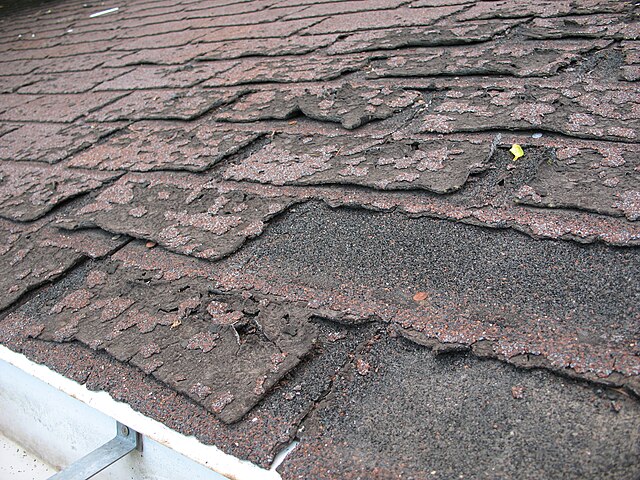Owning your own property is its own reward. Your home is yours and you can do what you want with it. You don’t need to abide by the decoration rules of a landlord; it is full of its own touches and delights. It feels more like your home than any rented property ever could.
Despite all of the benefits, there is one downside to home ownership – you are totally responsible. If something goes wrong, there is no landlord to call to ask for help. Your insurance can cover some things, but most policies require you to at least make the effort when it comes to maintenance.
Maintenance is one of those thankless tasks. Rarely does it feel like you have made a difference; the whole point, of course, is to keep things running as they should as http://www.thepackratwifey.com/why-household-prevention-is-better-than-cure/ shows. It doesn’t feel like an exciting way to spend money, especially if you have design and decor ideas that are clamouring for investment.
Yet not only does poor maintenance damage your insurance policy, it damages your quality of life. If you’re living in a house that is not fit for purpose, it goes without saying that there are changes that need to be made.
There are so many areas of your home that need constant updating, improvement and quality checking. To try and exercise some kind of control over this most fluid of things, below, there’s an A-Z rundown of all those little tasks. Run through it at least once a year, or setup a calender like this: http://www.apartmenttherapy.com/how-to-set-up-an-annual-home-maintenance-calendar-176043 (or as advised; some things are seasonal). If you do that, then you can be sure that your home is always working as it should be.
A is for Antifreeze

[Photo courtesy of Dmcroof/wikipedia.org]
When winter rolls around, the last thing you need is your gutters freezing and water gathering. That’s no joke: it can lead to gutters collapsing, which is expensive to replace. Try and run antifreeze down your guttering at least once a week.
B is for Boiler
If your boiler is more that four years old, have it serviced annually. If it’s younger and under warranty, check the terms of the warranty. Some require annual services from the off to remain valid.
C is for Cavity Wall Insulation
If your home is not insulated, make it so as a priority. You are likely spending more than you have to on heating bills. If it is, get into the attic and check it annually to ensure there’s no damage.
D is for Drains

[Photo courtesy of CharlesHodgson/flickr.com]
Especially important in fall with the fallen leaves, clear drains out regularly.
E is for Energy Efficiency
Smart Meters can help maintain proper energy efficiency, but there are less hi-tech ways of doing it. Do you turn lights off when you leave a room? Turn off devices rather than putting them on stand-by? You should be, so think over your habits and make changes where necessary.
F is for Flooring
As floors age, they become more susceptible to heat variations. When it’s cold, they will contract, and the expand again when the weather warms up. This can cause cracks and weaken the whole flooring structure, so check every year that a bigger problem isn’t developing.
G is for Gas Central Heating
Along with the boiler servicing mentioned in “B”, there is another step to take to ensure your central heating is working as it should. Bleed radiators with the change of every season to keep them at the top of their game.
H is for Home Invaders

[Photo courtesy of Earth’sbuddy/wikipedia.org]
No, not aliens, though that would be far more entertaining. Move kitchen appliances and check the attic every few months to check for signs of invasive pests. If you see signs of such an invasion, act as quickly as possible to prevent the spread.
I is for Internal Holes
Terrorised by spiders every fall? Wondering how bugs keep getting inside? Mouse problems? The solution to keeping the wildlife outdoors is to check for any holes in walls. A mouse can fit through a hole of less than an inch in diameter, so be thorough.
J is for Jagged Cracks
Vertical wall cracks are usually due to use and stress, rather than structural problems. The ones you need to worry about are jagged, horizontal cracks. Call an engineer the moment you see anything fitting that description.
K is for Kitchen Sink and Waste Disposal
Even if you practice the best methods possible, every sink is prone to blocking. Run a dose of unblocker through the kitchen sink system every six months to prevent any such issues developing.
L is for Limescale
If you live in a hard or well water area, then you will likely suffer from limescale issues. Not only can this tarnish taps, but it can also render your washing machine unusable. You can find some ideas to combat it at https://www.theguardian.com/lifeandstyle/2009/aug/23/how-to-remove-limescale
M is for Mildew and Mould

[Photo courtesy of Gil mo/wikipedia.org]
Mildew is the product of a house being too damp. Check corners and edges of window frames for any sign of small black spores. If identified, be ruthless with regards to cleaning. Tea tree oil works well.
N is for Nail Holes
This is only a particular worry if you are planning to sell the house soon! But from an appearance point of view, nail holes in the wall can be unsightly and leave the buyer feeling that they have to patch them up. Even if you’re out of the home by then it can leave residual bad feeling. Any time you remove a nail from a hole, patch it up. Then there’s no need to go around looking, should you ever sell up.
O is for Organisation
Some order to your home maintenance plan is essential. For one, basic reason, there is the fact that some jobs will get in the way of others. For example, would you paint a skirting board before sanding down the wall that is above it? No – that’s just asking for trouble. Order will save time, and extra work.
P is for Preparation
Before the season changes each time, check you have everything you need to survive it. For fall and winter, flooding and freezing are the major hazards. For spring and summer, access to water and sensible shaded areas to be in when outdoors are required.
Q is for Quotes
There will possibly be some jobs around the house that you find yourself struggling with. It’s worth having a go, but you also need to know the things you can’t do, such as http://www.nextavenue.org/home-repair-when-not-do-it-yourself/. If you decide you need to bring in help, get three quotes from different contractors. Don’t just listen to the prices – hear what they say about the job too. Anyone can quote a low price for something they won’t do properly.
R is for Roof

[Photo courtesy of DMahalko/wikipedia.org]
Your roof not only keeps your home dry, but it plays a part in the structural integrity of your home. If you have any leaks or see missing tiles, then bring in the professionals such as www.fergusonroofing.com/metal-roofing/ as soon as possible. It’s not an area to leave to chance.
S is for Smoke Detectors
Make sure they’re working, obviously. Test them by lighting a match underneath and see if they go off. Also, if any are emitting regular “chirp” noises, chances are that they’re on the way out. Replace the batteries once a year, even if they’re showing no sign of running down
T is for Trashcans
Yes, just screams glamor, doesn’t it? But it is essential to check the trash cans and dumpster every once in a while and clean them regularly, ideally with a jet washer. The reason? Well, they may get emptied on a regular basis, but particles cling on. Left to fester for too long, these will rot. Your garbage will become a haven for pests who may then decide to move to the house.
U is for Underneath
Everything above ground level is easy to keep an eye on, as you go through it every day and see it with a keen eye. But in the basement, unless there is a bedroom or living space down there, things can happen unnoticed. Check for water ingress, as this can affect the foundations.
V is for Vanities
One of the most popular bathroom improvements you can make, a vanity makes use of space in a room where there is usually so little. On the larger models, which are enclosed, do make sure you check for any issues in the pipes regularly. Leaks can lead to pooling of stagnant water, which is no-one’s friend.
W is for Windows
Cracks around the outside of a window, or even any minor gap between window and wall, can become a way in for water, and a starting point for mold. Ensure that yours are in order.
X is for eXtremes Of Temperature
We pick the materials that we do for housebuilding because they are durable and hard wearing. But depending on where you live, temperatures over the year can go from below freezing to over 100 Fahrenheit. Things contract when cold and expand when hot. This can cause damage, so look out for cracks outside after a cold snap.
Y is for Yellow
Some white gloss paint, within months of application, can turn yellow on wood. This is believed to be as a consequence of weaker solvents being used in the paint. It’s something to check for if you have recently painted door frames or window sills.
Z is for Zzzzzzzzzz
Okay, maybe a little bit of a cheat. But finally, it is most important to pay attention to the bedrooms and particularly where you lay your head to sleep. This is the most important place to check for nasties like mold. If they are allowed to make their way in, and get close to where you sleep, they can be inhaled and make you very ill. And as sleep is the only time you’re in the same spot for six to eight hours a day, you’re a captive audience. So be careful.
[ Tagged In ] Home Improvement, Home Improvement Tips, Home Maintenance, Home Maintenance Tips, House Improvement, House Maintenance, House Tips, Maintenance Guides, Maintenance Ideas, Maintenance Tricks






